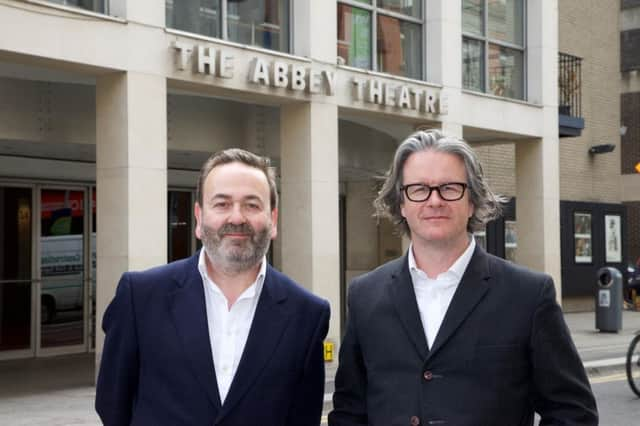Murray and McLaren can be the answer to Abbey’s prayers


Both Murray and McLaren have impressive track records in Scottish theatre and beyond. Murray, who comes originally from Wales, worked at the Citizens’ and was a hugely successful director of the Tron Theatre, before he joined the founding team at the National Theatre of Scotland a decade ago. Graham McLaren is a dynamic and gifted Scottish director and designer, now responsible for some of the most successful shows in the NTS repertoire, including the company’s acclaimed 2013 production of In Time Of Strife.
Yet their appointment was no sooner announced than at least one prophet of doom, in the Irish Independent, was casting doubt on their ability to take on the notoriously tough job of running Ireland’s much-debated national theatre, which has had a high-profile role in the nation’s public life ever since its foundation in 1904. The main subjects of contention seem to involve the whole idea of a double leadership of the theatre, the fact that Murray and McLaren come from the NTS (a “provincial” theatre in the UK, according to the Irish Independent), and questions of repertoire; apparently a recent report by the Scottish-based consultancy Bonnar Keenlyside irritated some by suggesting a mainly Irish focus for the Abbey’s work.
Advertisement
Hide AdMost of these criticisms, though, suggest a lack of awareness of the huge international impact of the National Theatre of Scotland’s work over the past decade, and of the growing influence of the innovative “without walls” model on which the theatre is founded. Murray and McLaren not only have an excellent record of working creatively together, but a unique history of recent experience in reinventing the very idea of a national theatre. The National Theatre of Wales, for example, set up in 2009 to serve English-speaking Wales, was very much inspired by the NTS model.
“We already had the example, here, of our Welsh-speaking non-building-based national theatre, Teatr Genedlaethol Cymru,” says NTW director John McGrath. “But I think the style and vigour with which Vicky Featherstone, Neil Murray and John Tiffany launched the NTS really opened up the space into which NTW could move – they showed that not having a building was not only not a problem, but a huge opportunity.”
And while Ireland’s national theatre will always be based in its two famous auditoriums in Abbey Street, it’s clear that after a traumatic financial crisis a decade ago, and a long period of recovery, the Abbey’s board is now eager to bring some of that new thinking into the organisation, when Murray and McLaren arrive in July 2016. “I have the happiest memories of my time at the Tron,” says Murray, “and although I’ve had the most wonderful job at the NTS for the past ten years, part of me is really looking forward to having a building to work with again.
“Essentially, the Abbey and the NTS have very similar annual budgets, really almost identical, so it’s obvious that the Abbey has a lot to do with its money – maintaining and creating shows for the building, as well as serving the whole of Ireland. But we already have plenty of ideas about how to achieve that – particularly creating more shows that are not made in Dublin, but reflect the whole rich geography of the island.
“The theatre tradition in Ireland is amazing, and there are so many brilliant theatre artists, many of whom we already know through various projects over the years. So the possibilities are endless – and it’s a bit daunting, yes, but tremendously exciting.”